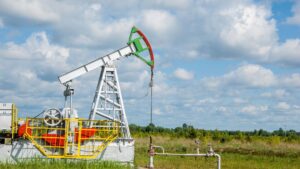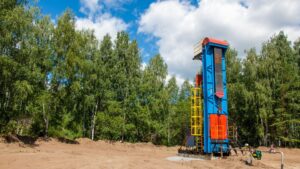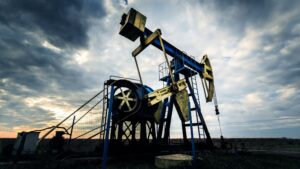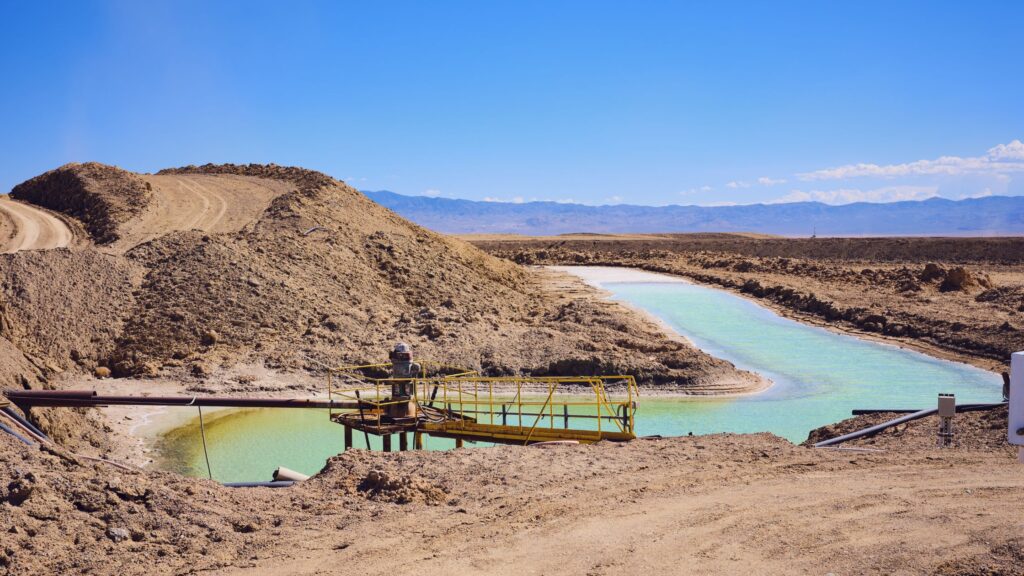It’s a compelling strategy that has been growing more momentum and reshaping the landscape of oil and gas extraction.
However, not all mineral owners understand the term “pooling” and that’s why this article is focused on shedding more light.
What Is Pooling In The Oil And Gas Industries?

Pooling is a joint operation where multiple mineral rights owners out of free consent agree to merge their interests in a specific area. It’s simply the combining of leased lands with adjoining leased tracts.
The concept of pooling is to optimize the production and exploration of minerals. By cooperatively pooling their interest, mineral rights owners can negotiate with oil and gas operators, share costs, and get interests/royalties.
Generally, pooling occurs when a certain amount of total acreage is needed to obtain a drilling permit. It’s a method of gathering different separate tracts of land and oil and gas leases into one unit.
How Does Oil And Gas Pooling Work?
The process of pooling first involves creating a pooling agreement that clearly states the terms under which resource owners will combine their interests, including allocation of costs and ownership percentage.
After this, the procedure is quite simple. The pooling agreement establishes a pooling unit which is a designated area where all mineral rights are combined. After the oil and gas production begins, the mineral interests generated are then shared based on ownership percentage and another allocation formula based on the pooling arrangement.
What Is A Pooled Unit?
A pooled unit is two or more tracts of land owned by multiple individuals where mineral rights are combined for the sole purpose of exploration and production activity.
By establishing a pooled unit, all owners agree to jointly develop and extract the oil within the area.
What Are The Types Of Pooled Units?
Pooled units are established on different factors. The common types of pooled units include;
- Spacing Unit: A spacing unit is just a pooled area allocated to a well for the sole purpose of drilling and producing oil and gas. It determines the specific location and distances between wells within a given reservoir.
- Reservoir or Field Unit: A reservoir unit is created to pool interests in a specific oil or gas field. The purpose of this type of unit is to streamline operations and effectively promote reservoir management, thereby enabling stakeholders to work together towards successful exploration and production of oil and gas.
- Drilling Unit: A drilling unit is an area in the oil and gas industry where wells can be drilled to access and extract oil or gas reserves. It’s the minimum acreage on which a well can be drilled. It delineates the specific boundaries on which drilling operations can take place. Ideally, in oil and gas leases, the designated area for drilling is usually stated, and going over the assigned sections or acres of land will result in legal problems.
- Drilling units prevent interference between wells and still facilitate proper reservoir management.
- Communitization Area: Communitization agreements are established to pool interests across multiple leases. It often occurs when a reservoir extends across lease boundaries.
- Communitization is when multiple tracts of land are combined into a single production unit to develop and produce mineral resources more efficiently.
- Unitization: Unitization refers to the process of combining ownership interests of multiple interest owners in a common reservoir. The goal of unitization is resource conservation by consolidating operations and establishing a unified plan for exploring and producing oil and gas. A unitization agreement is established to define the lease terms, leased premises, and all other important clauses related to oil and gas law.
- Production Unit: A production unit is a grouping of wells where oil and gas are produced from a common field. It involves grouping wells that are within close proximity and collectively contributing to the extraction and production of resources from a single field.
- Proration Units: It’s a government-designated geographic area where the production and extraction of oil and gas are regulated and controlled.
What Are The Most Common Types of Pooling?
There are different types of pooling, and understanding each variation will help you if you ever plan on leasing out your land for its minerals.
Some of the pooling that occurs in an oil and gas company include:
Leasehold Pooling
Leasehold pooling is the merging of multiple leasehold interests from different interest owners into a single entity for oil and gas production. This is more efficient, for example, the costs of drilling wells, transportation costs, and other expenses will be greatly minimized.
It’s a prudent way of saving more money and still getting to enjoy maximum royalties and interest from your leased land.
Production Pooling
Production pooling is sometimes used interchangeably with unitization. That’s because it involves the consolidation of different wells within a specified field.
With production pooling, state regulations and approvals are needed to establish a unified approach for resource extraction.
Participating Area Agreement (PAA)
When different individuals have oil and gas leases for a particular area, and they all come together to combine their interests and develop the mineral resources in the said area, that’s the “Participating Area Agreement”.
In this case, every interest owner needs to know their oil and gas rights, to ensure fair and transparent compensation.
Infrastructure Pooling
Just like the name implies, infrastructure pooling refers to the sharing of or joint use of oil and gas infrastructure like pipelines, storage tanks, and transportation facilities. By pooling infrastructure, an oil and gas company can reduce cost, optimize utilization, and get better results.
The concept of pooling is to find ways that make things easier, without worrying about compromising on results.
Cost Pooling
Cost pooling, sometimes called joint venture pooling happens when different oil companies pool their financial resources to share the costs associated with extraction and production of oil and gas.
This helps to reduce financial burdens and offset unnecessary budgets.
What Different Types Of Pooling Arrangements Are Out There?
Landowners are usually subjected to different types of pooling arrangements.
Voluntary Pooling
Voluntary pooling happens when landowners or leaseholders agree to pool their resources together for joint exploration and production of gas and oil. This process is only effective when all parties give a mutual concept. Under the circumstances, that a particular owner decides not to agree to the arrangement, voluntary pooling cannot be established.
Most times, the option of voluntary pooling comes up so operators can get a drilling permit. In most states, and according to some state laws, small tracts of land cannot obtain a drilling permit, but when there’s a larger acreage of land, it’s much easier. And for this reason, participants voluntarily lease out their lands to be pooled in a single unit.
In voluntary pooled units, all landowners involved will have to speak the same pooling language, and they must have an established oil and gas lease that puts all parties into fair consideration.
Compulsory Pooling
In compulsory pooling, the landowners have no choice but to give up their properties for extraction and production. This happens when certain landowners are reluctant to participate in the pooling arrangement. A pooling order is usually issued by regulatory agencies and this forces the landowners to lease out their tracts of land. Most times, the operators need the entire field within a geographic location for efficient execution and production of oil and gas, so when a landowner refuses to give consent, it derails the entire plan. So, the production company files for a pooling order, and the hearing is usually held before the appropriate state agency.
While it may seem like an unfair deal, it’s usually in the best interest of everyone, because the operator will save more money, and there’ll be a more efficient development.
Compulsory pooling or forced pooling will involve the imposition of certain conditions and terms. However, if you ever find yourself in this position, make sure the lease provisions stated in the oil or gas lease are favorable to you. Pooling provisions vary depending on the type of lease, but one thing is constant, the royalty entitled to each owner is always fair.
Optional Pooling
In optional pooling, as a landowner, you can decide on participating in the pooling arrangement or not. There’s an option to join the oil pool or not, unlike voluntary pooling, not all parties have to consent. Landowners who don’t want to be part of, they’ll still retain separate rights to their minerals.
Statutory Pooling
Statutory pooling is similar to compulsory pooling as it’s usually mandated by statutory law. It provides a legal framework for the combination of different leasehold interests, and defining the rights for all persons involved.
Statutory pooling gives unrestricted rights to the operator, however, as a landowner, you should read the pooling clause in your oil and gas lease to be sure that you are fine with the conditions before signing.
What Is The Impact Of Pooling On Lessors (Owners)?
Pooling is a great way of generating extra revenues for the lessors because the fact remains that, it’ll cost you a lot more to single-handedly develop and explore your resources.
Some of the major impacts of pooling on landowners include;
- Dilution of Control: Generally, when you pool your land, you are relinquishing some of your rights to the oil and gas company or operator. Decision-making is no longer your sole responsibility, as your land/mineral interests are now combined with others. Lessors are no longer permitted to carry out any unsupervised operation on the land, and this is usually stipulated in the oil and gas lease.
- Cost Sharing: On the bright side, while you might not have control over what happens in your own portion of land, you don’t need to handle the cost of exploration and drilling alone. The lease terms usually include sharing of production costs, transportation costs, and any expenses that might arise.
- Royalty Distribution: Most leases contain a pooling clause of how interests are to be distributed. As a result, lessors will receive royalties based on their share of the pooled production. The pooling arrangement will likely affect the total production volume and this can affect the royalty payment received by the lessor.
What Are The Benefits Of Oil And Gas Pooling For Landowners?
Landowners can benefit from pooling interests in the following ways;
- Pooling enables the consolidation of different land parcels, which would mean more effective extraction operations. Better infrastructure development, resource management, and drilling activities would result in better operational efficiency and cost savings.
- Thanks to the advanced techniques and technologies pooling facilitate, there are better recovery rates and better overall production.
- A landowner can easily spread the risks that are associated with drilling and production operations across a larger area.
- By pooling interests, landowners would get access to the expertise of knowledgeable and experienced operators in the industry.
- With pooling, a landowner would not need to manage individual leases but rather deal with just one operator or entity.
What Are The Potential Drawbacks Or Risks Of Oil And Gas Pooling?
These are the related risks or drawbacks that could come with the pooling clause;
- At the point of pooling their interests, landowners are giving up a certain percentage of control over their mineral rights or individual leases. Some collective decisions include overall operations, production techniques, and drilling locations.
- While pooling makes room for sharing of revenues and costs, the financial benefits are not always distributed equally.
- Disputes could arise between landowners due to the fact that the pooling process can be quite complicated. These problems could include lease termination rights, operational decisions, and lease terms.
- Operations can have significant impacts on the environment like land surface disruptions, habitat disruption, and air pollution. These impacts could be increased if multiple leases are pooled.
- The market is volatile and these uncertainties can affect operations and lead to a lower financial return for landowners.
- A landowner might be obligated to keep their leases and share a percentage of costs because pooling agreements usually come with long-term commitments.
What Criteria Are Typically Used To Determine If A Property Is Eligible For Pooling?
In order to determine whether or not a property is eligible for pooling, these criteria must be met;
- When it comes to determining if a property is eligible for pooling, the geological characteristics of the area come into play such as the presence of mineral reservoirs.
- There must also be consent or agreement from the landowner. The landowner must be willing to engage in pooling agreements and this could be through mandatory pooling provisions or voluntary agreements.
- Another factor that is put into consideration is the economic viability of the pooling operations. These factors usually include market conditions, anticipated costs, estimated reserves, and potential production rates.
- For properties to be eligible for pooling, they have to be within close proximity or contiguous to each other. This would allow for better production operations and more effective drilling as the acreage would be consolidated into one unit.
Are There Any Legal Requirements Or Regulations Governing Oil And Gas Pooling?
These are some of the major legal requirements and regulations that govern oil and gas pooling;
- Statutory Provisions: There are statutory laws and provisions that define the legal requirements and framework for pooling.
- Regulatory Approvals: Before pooling can happen, there are certain regulatory permits and approvals that operators are required to have.
- Consent and Notice Requirements: When it comes to voluntary pooling, it is required to get the consent of all affected interest owners and landowners. There are certain jurisdictions that require specific notice requirements to be fulfilled.
- Minimum Acreage Requirements: For properties to be eligible for pooling, there are some minimum acreage requirements that have to be met first to make sure the unit is of adequate size.
- Termination and Modification Rights: Legal provisions could be put in place to identify the situation in which pooling agreements can be modified or terminated. These provisions could contain conditions like agreement violations, expiration of leases, and changes in production levels.
- Environmental and Surface Protection: These regulations most times come with provisions that are associated with surface restoration, environmental protection, and mitigation of impacts on water and land resources in the surrounding area.
Why Is The Oil And Gas Company Asking To Sign A Pooling Agreement?
These are the reasons why an oil and gas company might ask a landowner to sign an agreement;
- Efficient Resource Extraction: With the pooling clause, oil companies can easily combine mineral rights and adjacent leases into a single entity.
- Overcoming Small Tract Limitations: There are landowners that own small tracts of land without plentiful oil and gas resources. With pooling, an opportunity is provided to these landowners as they would be able to make a combination of their interests with neighbor property lines.
- Risk Mitigation and Cost Sharing: The costs and risks that come with oil and gas operations can be shared among multiple landowners by pooling interests.
- Regulatory Requirements: There are some cases where regulatory requirements would be needed for the development of mineral resources.
- Enhanced Negotiating Power: With the pooling clause, landowners can now have better terms and conditions in both the primary term and secondary terms of the lease agreement.
Conclusion
Pooling is a vital practice in the oil and gas industry. With the combining of multiple interests, landowners potentially increase the value of their investment.
However, understanding the implications and privileges that come with it is crucial for all persons involved. Be sure that all the various provisions in the pooling clause are beneficial to you, and that you get your desired royalties/interests.
FAQs
What Is The Difference Between Pooling and Unitization?
Pooling is the combination of acreage or leasehold interests within a specific area for the purpose of exploration, drilling, and production, while unitization refers to the merging of large areas like a reservoir to optimize operations, reduce cost, and allocate resources around the unitized area.
What Is A Pooling Clause In Oil and Gas Lease?
A pooling clause is a contractual provision that allows leased lands to be pooled with other tracts of land to form a drilling unit. This mostly happens when an individual’s land doesn’t meet the required minimum acreage needed for a drilling permit.








